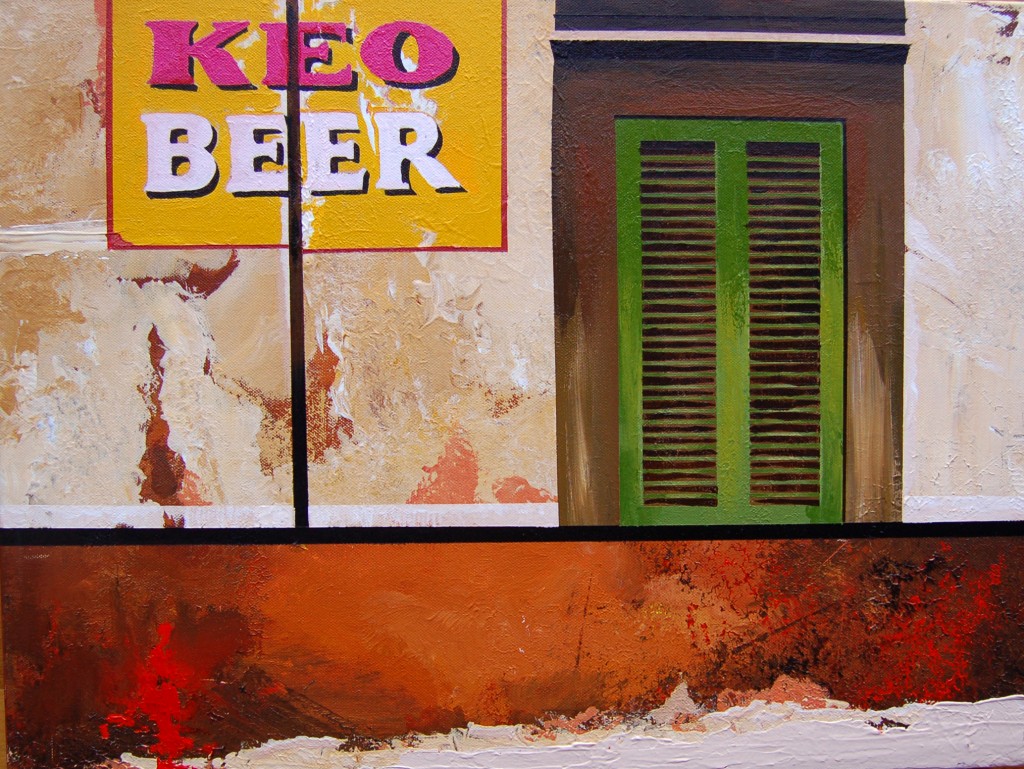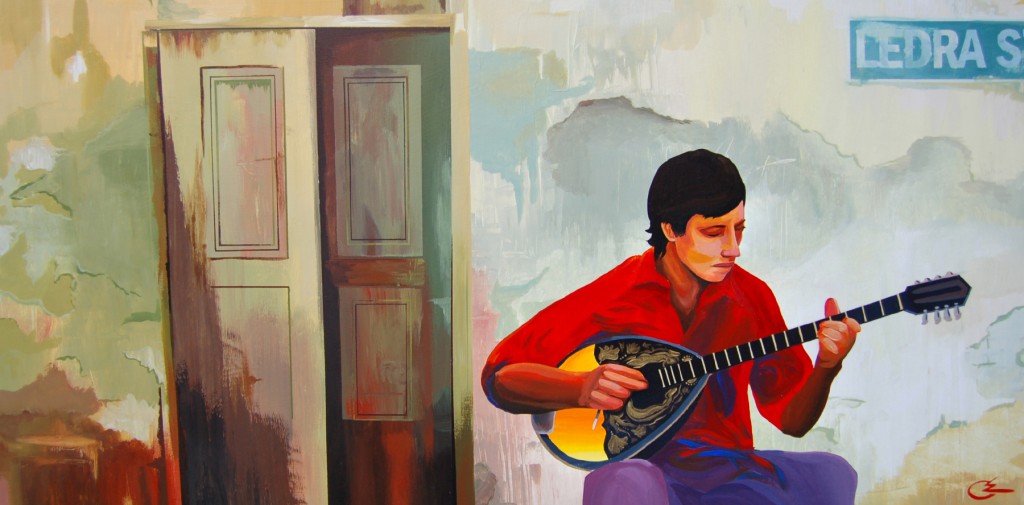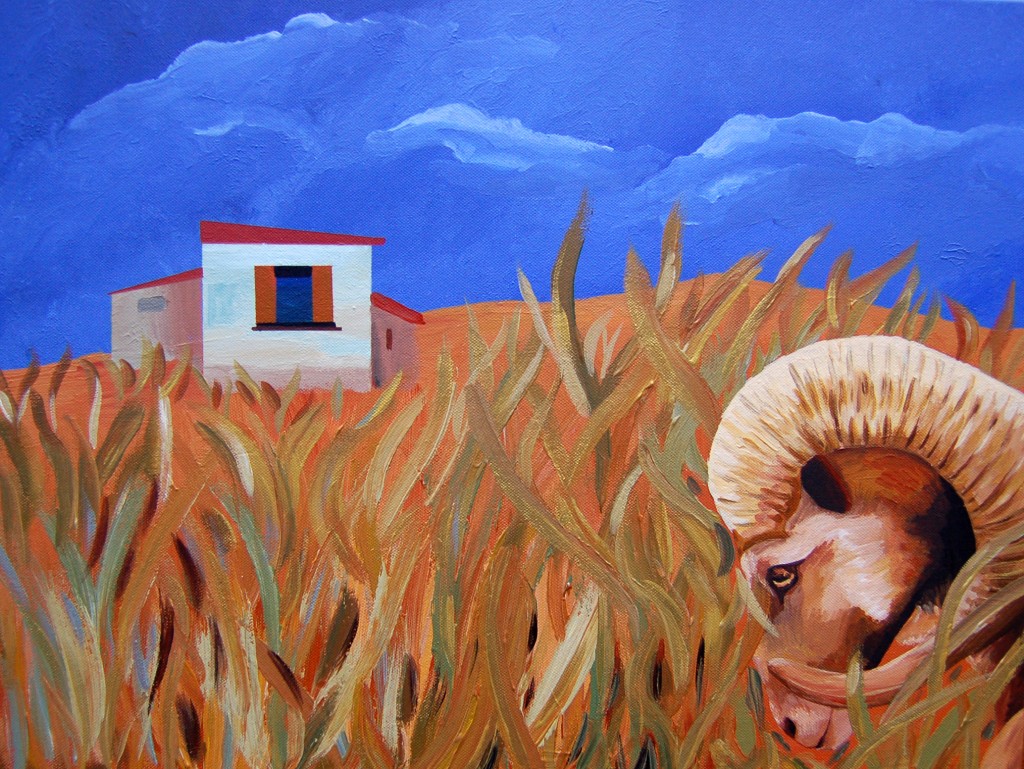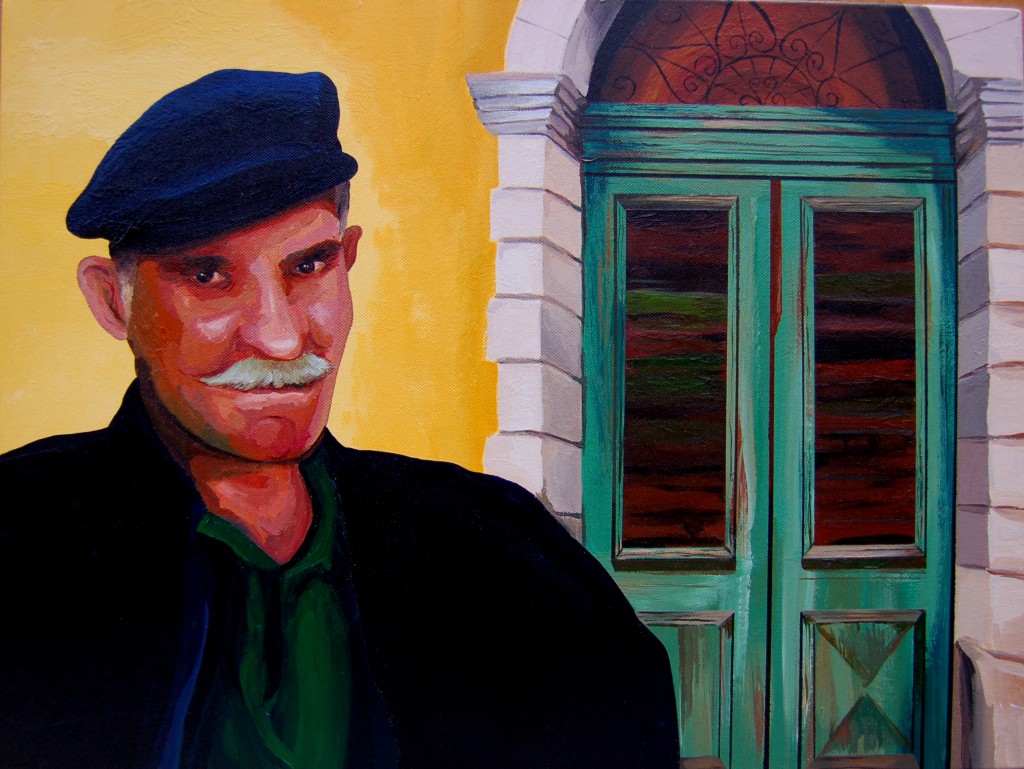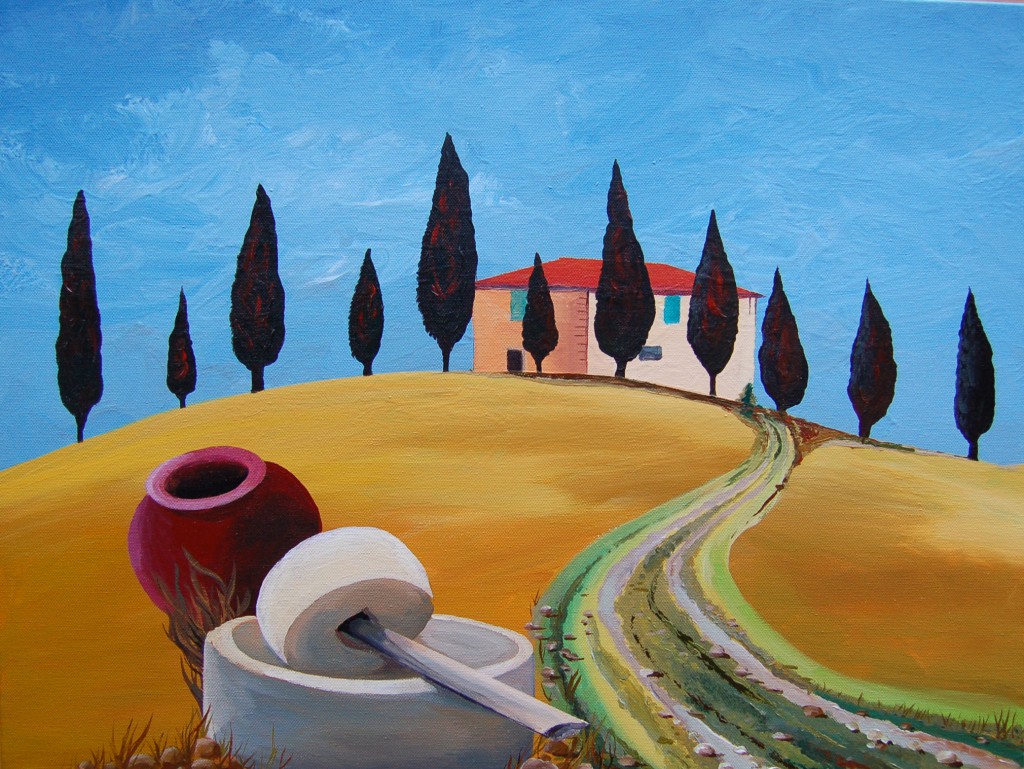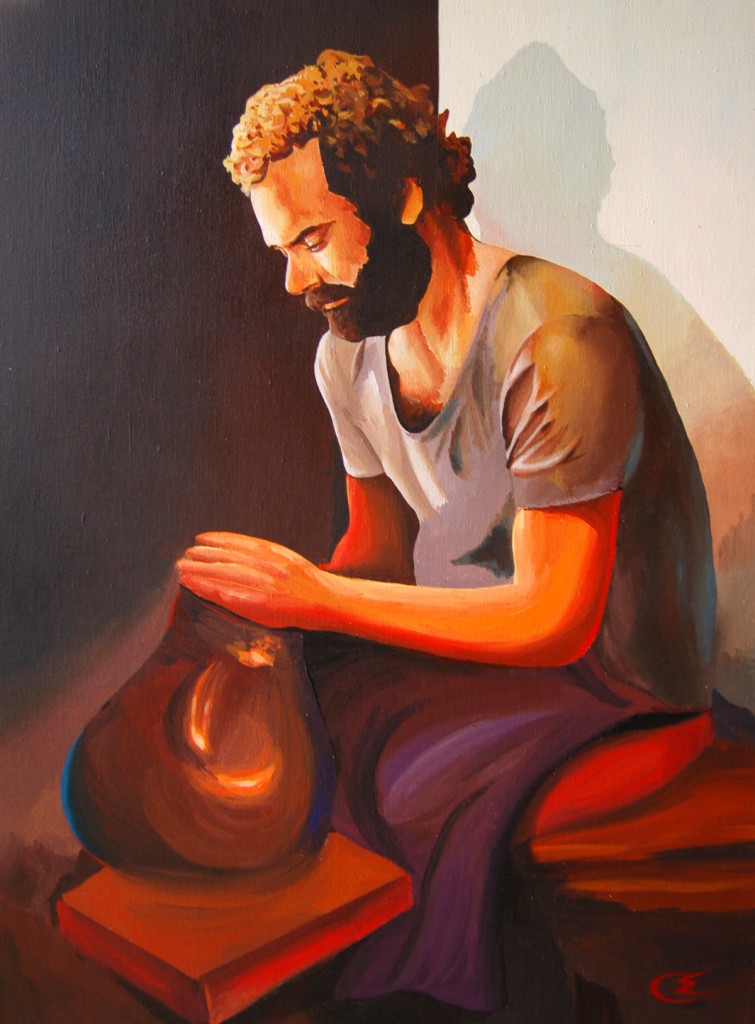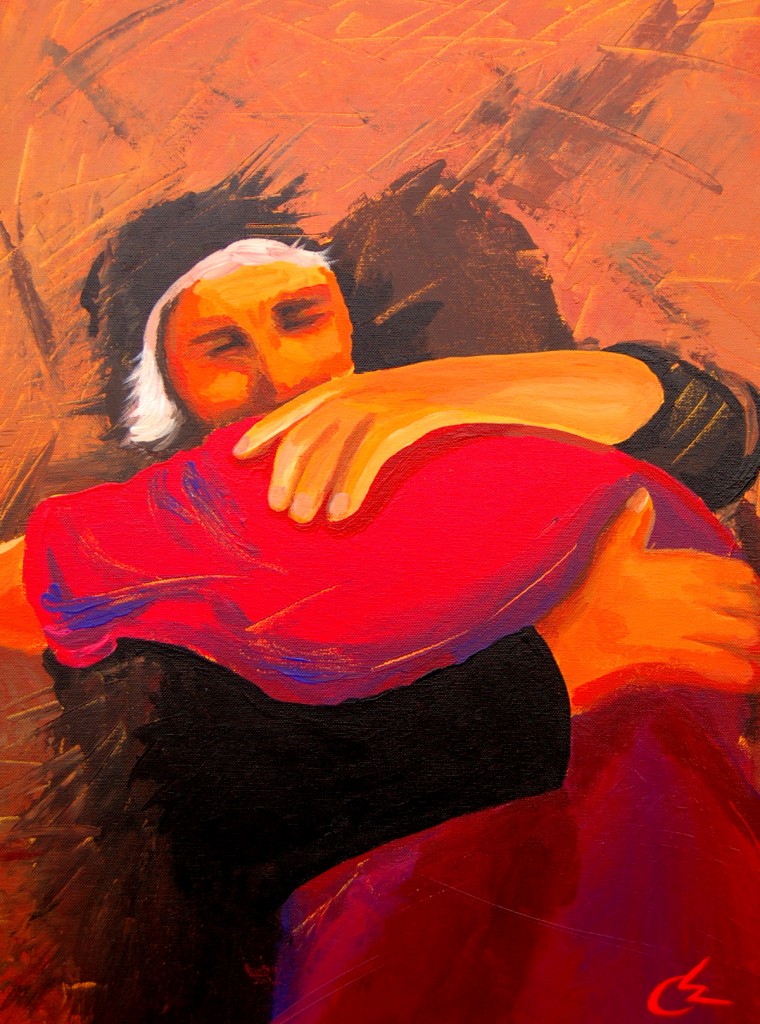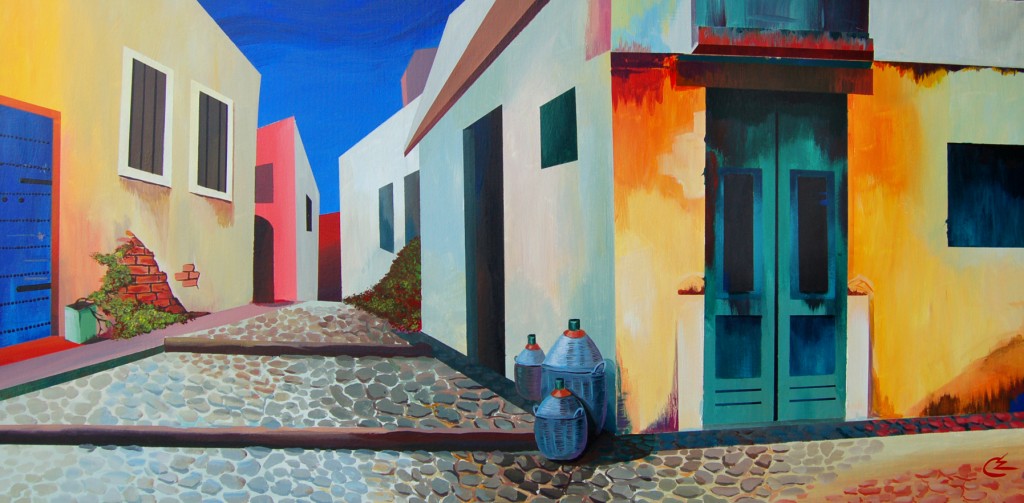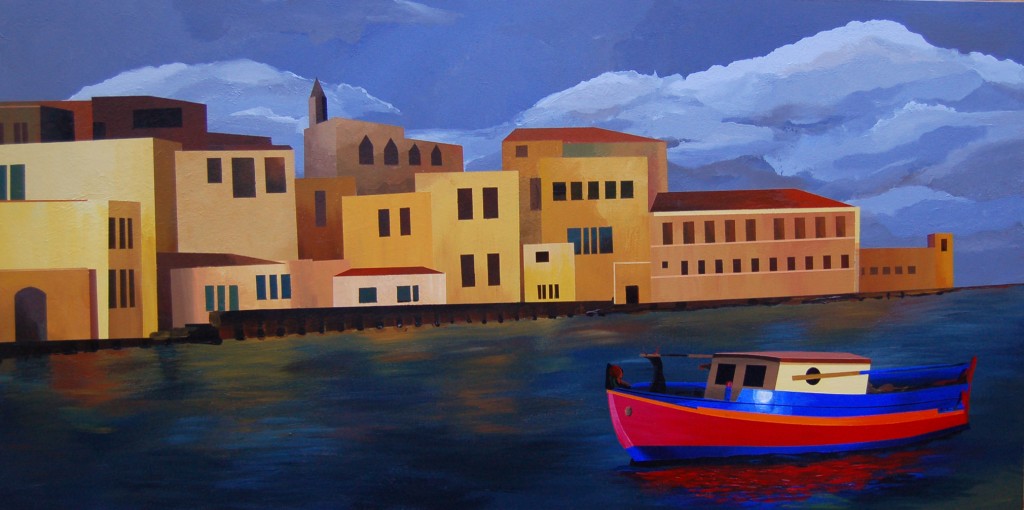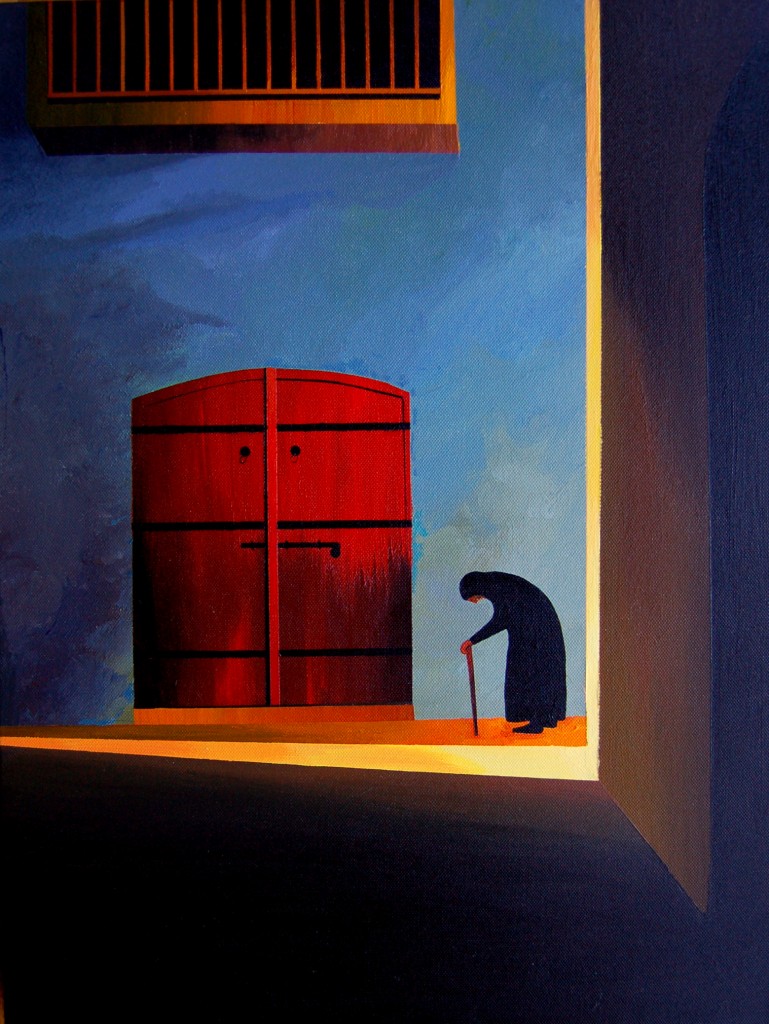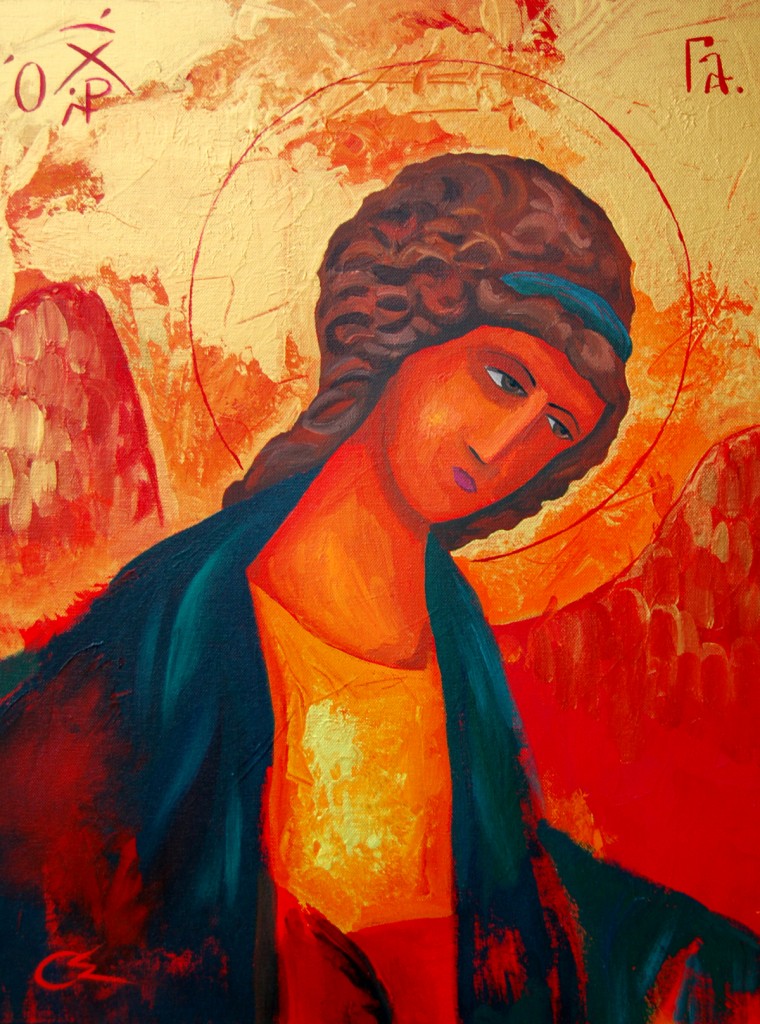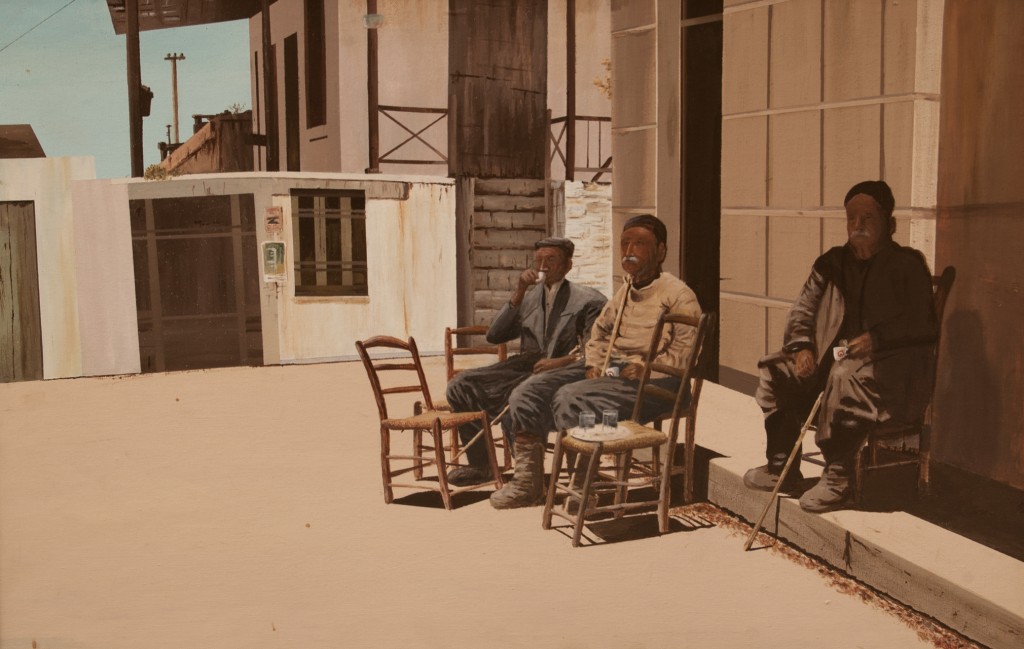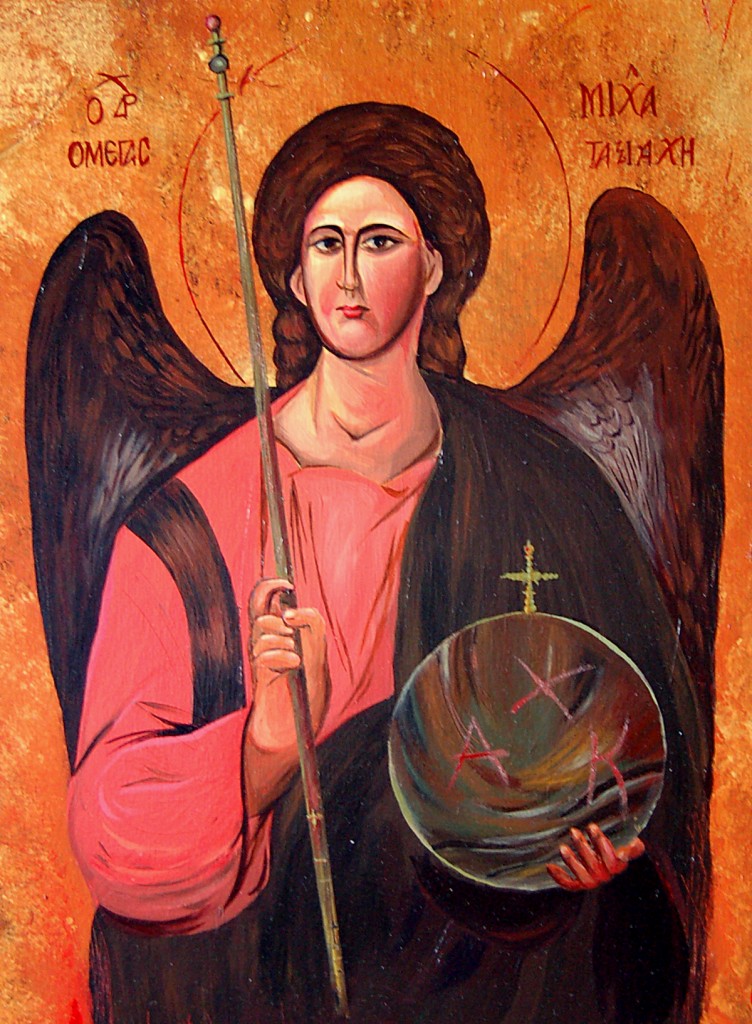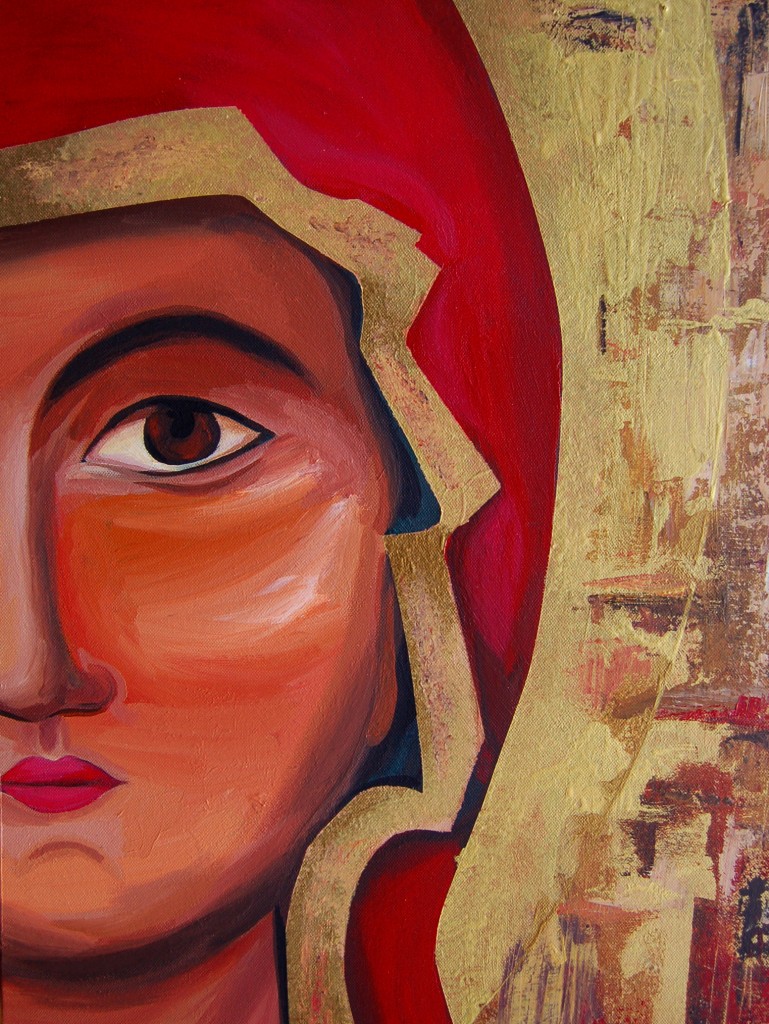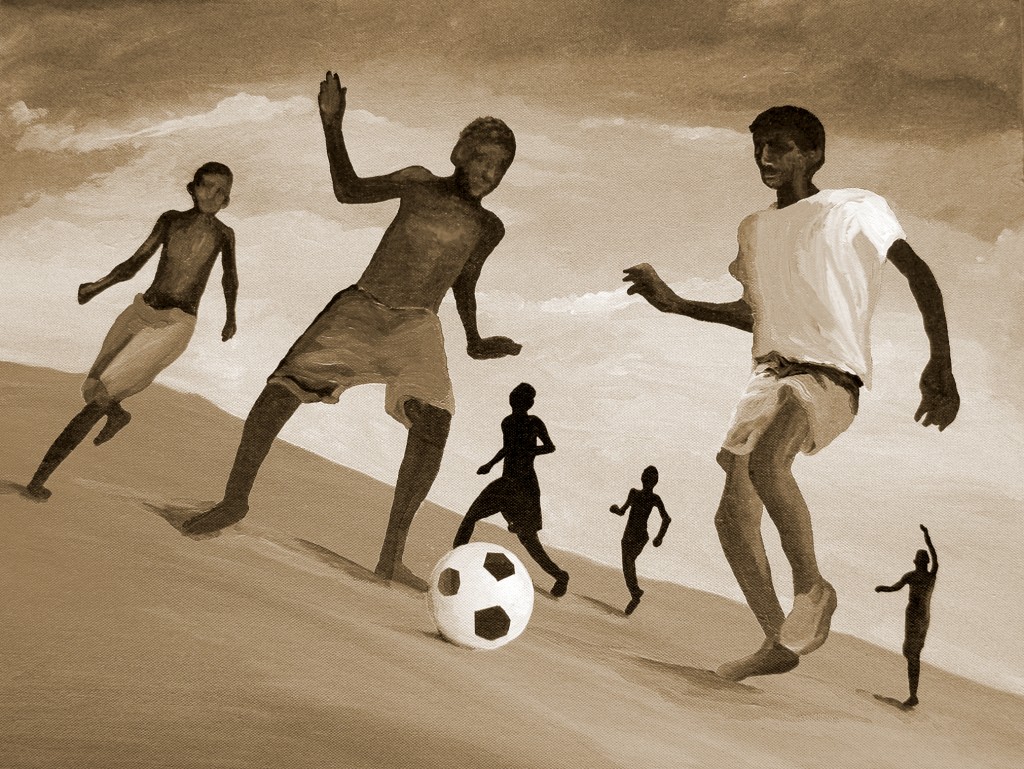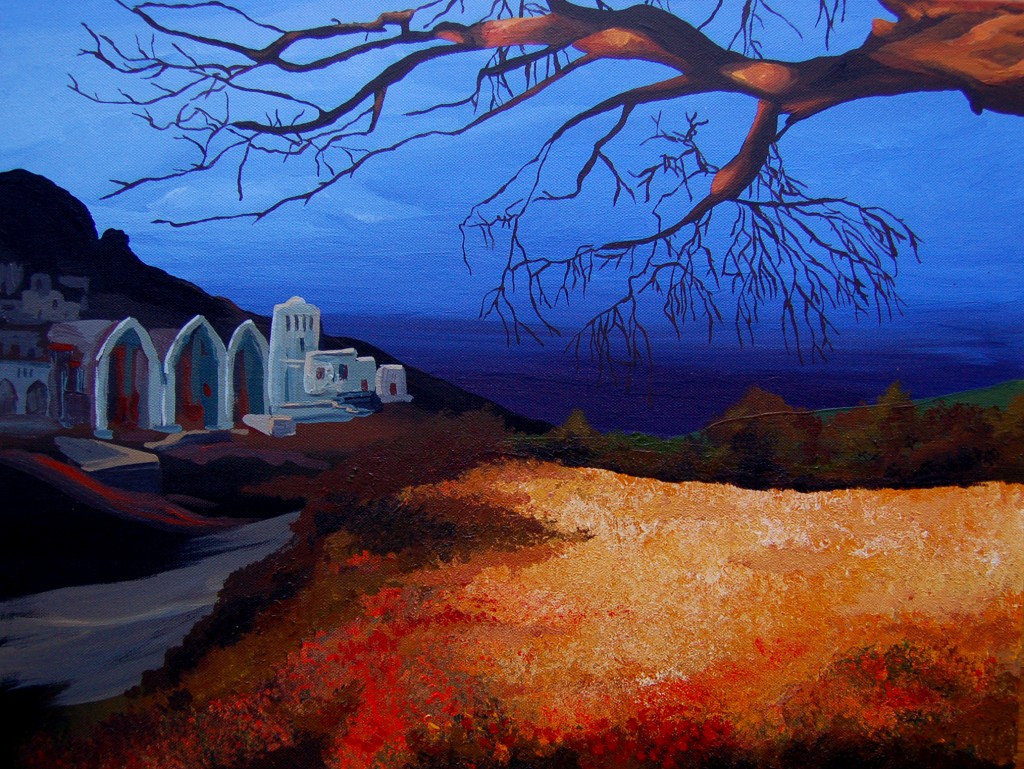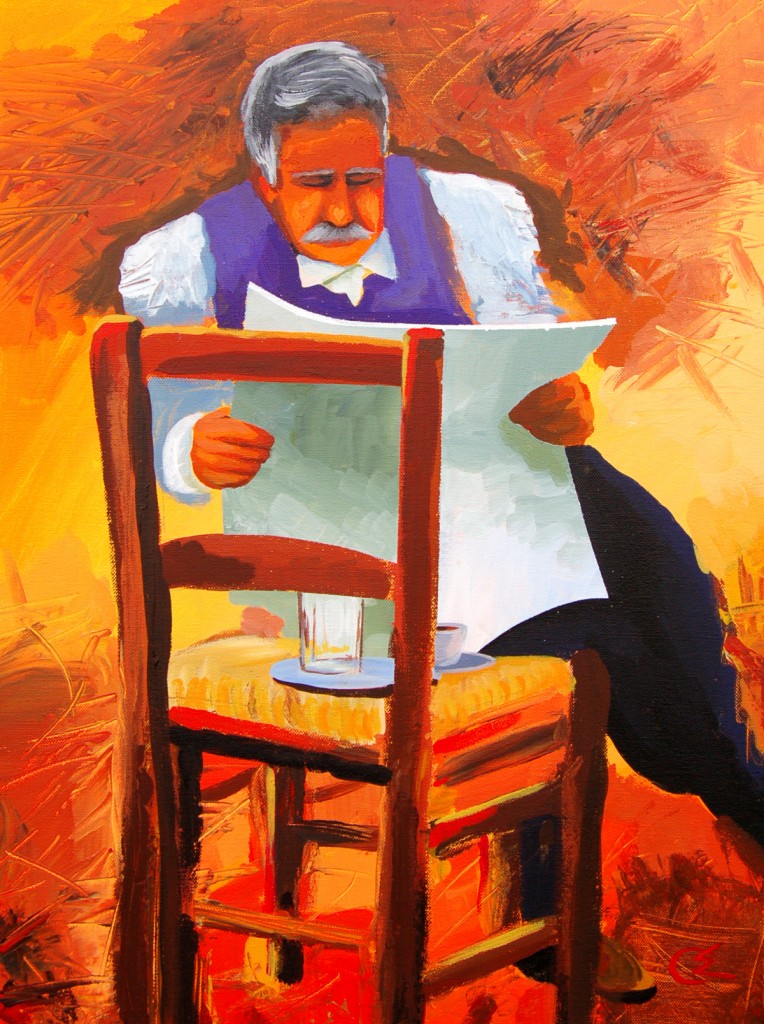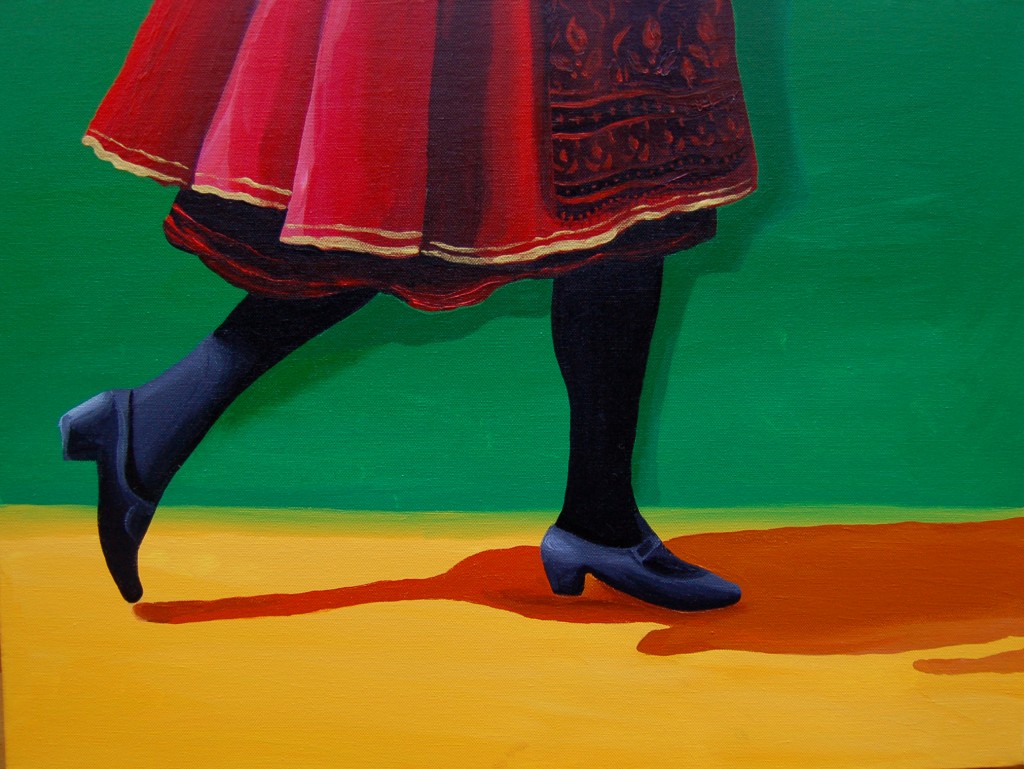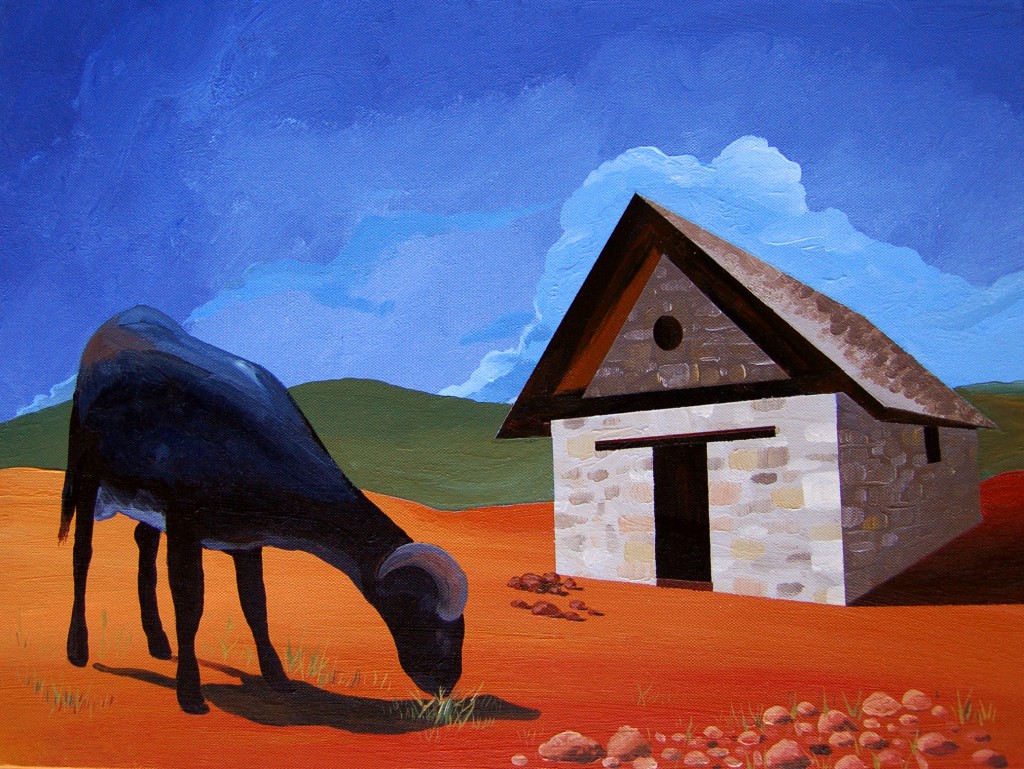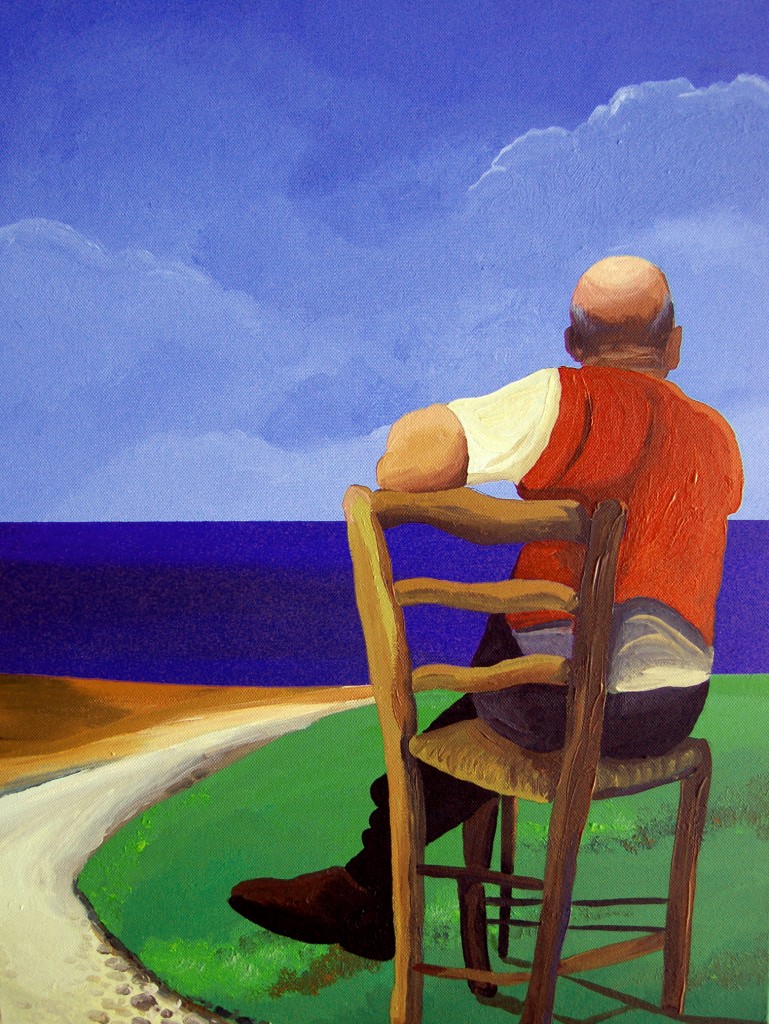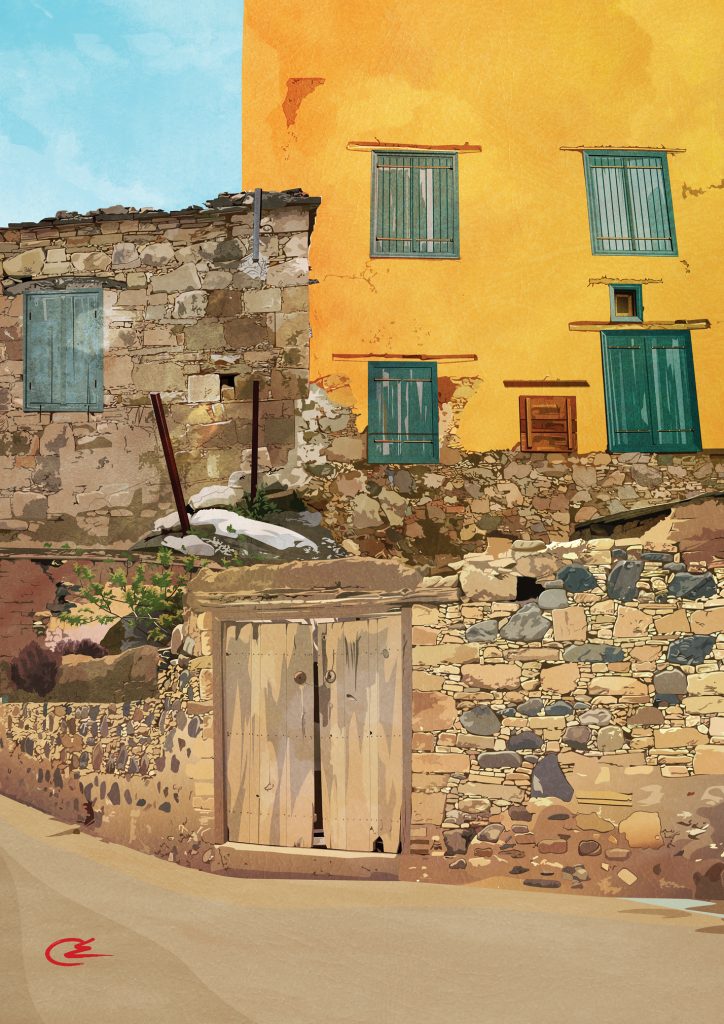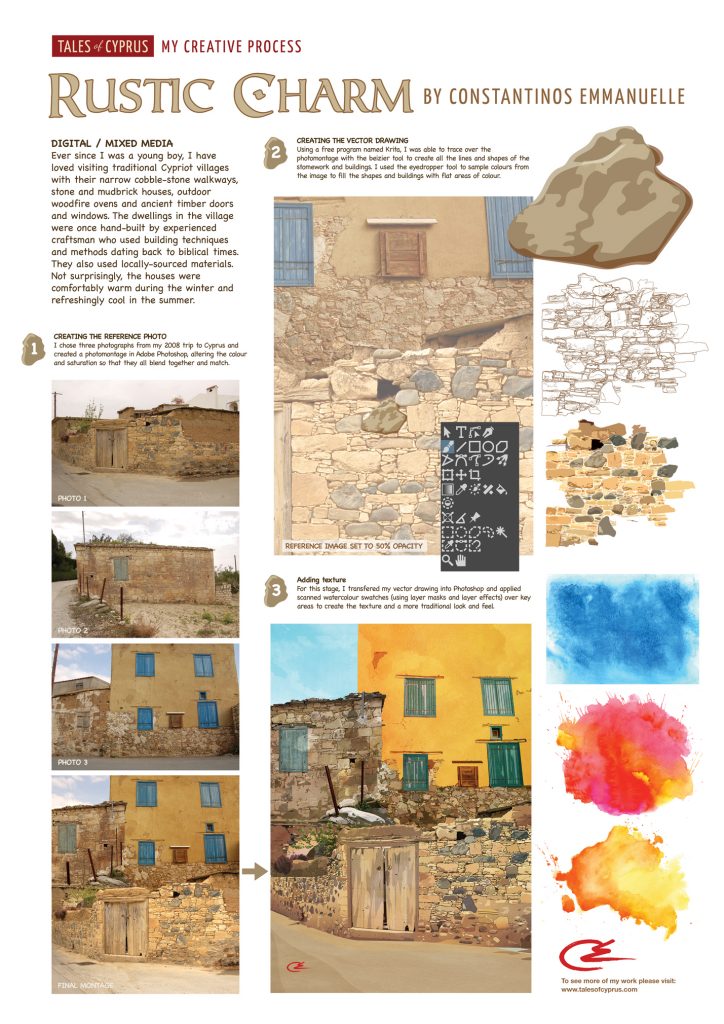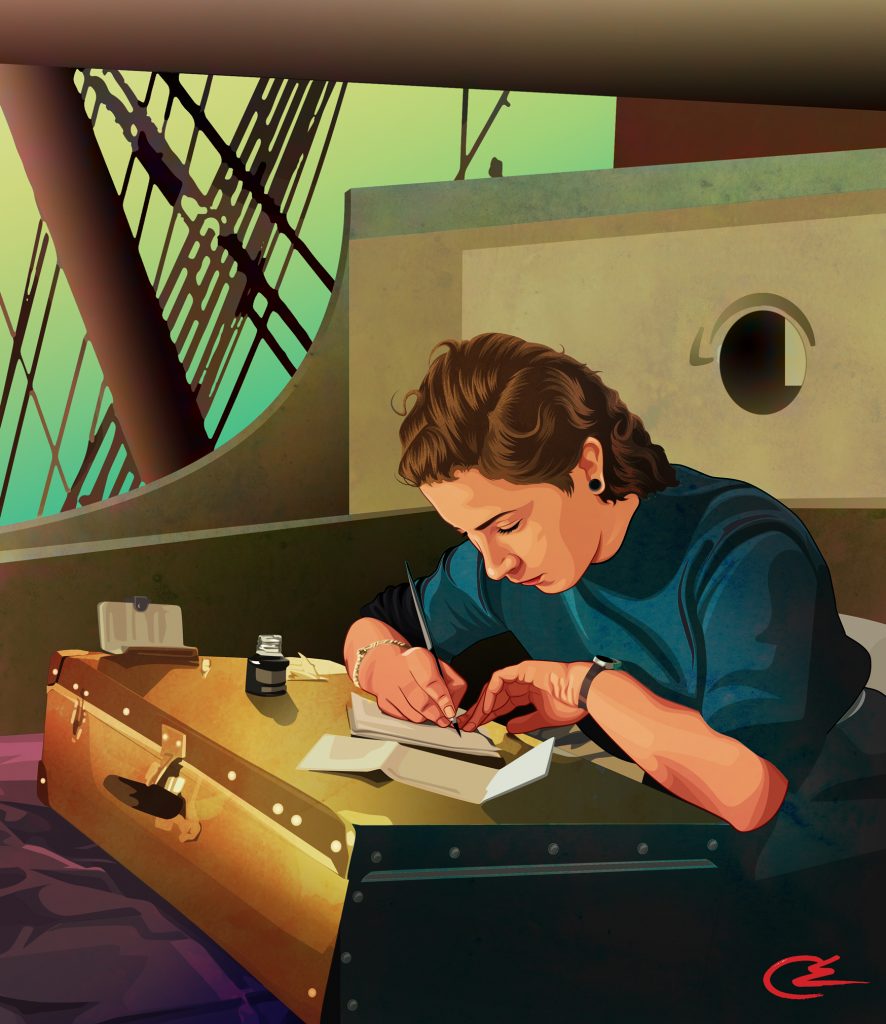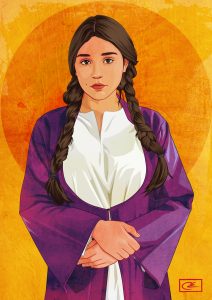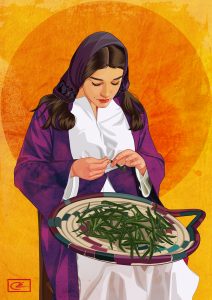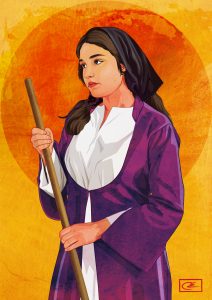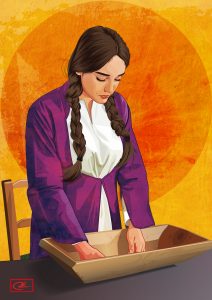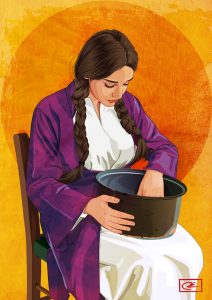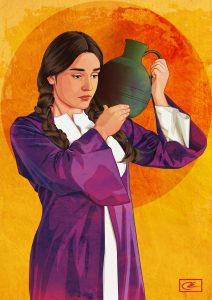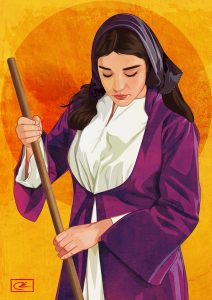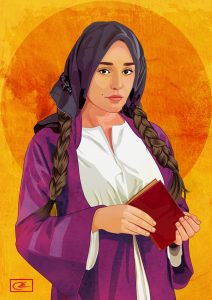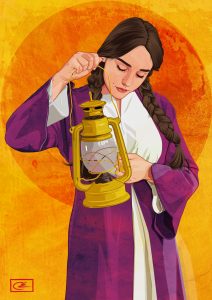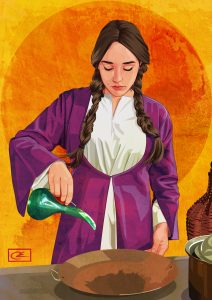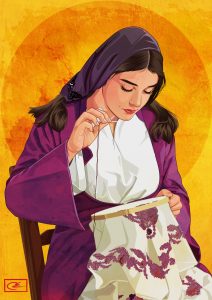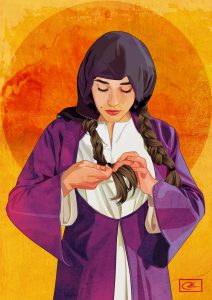My artistic journey so far…
These two panels represent my art portfolio for Tales of Cyprus over the last two decades.
I feel utterly blessed to be able to draw and create artwork throughout my life. It is true that most of the artwork I create for Tales of Cyprus has been inspired by my cultural heritage and is based on the Cyprus that my parents and grandparents once knew and loved. Although I have been traditionally trained and employed as a graphic designer, I have always enjoyed creating portraits and landscapes that pay tribute to a bygone era. I always take great care to seek and use accurate reference as the basis of my art but if that is not available, I tend to create my own reference.
Please click the image for a close-up view.
My creative process usually starts with months of research and investigation followed by brainstorming sessions, concept development, trials and experimentation and finally art production. Some of the artwork I create is based on stories or articles I have researched and written for Tales of Cyprus which you can find and read on my Facebook page: www.facebook.com/talesofcyprus.
Please click the image for a close-up view.
Rustic Charm
This artwork is titled ‘Rustic Charm’. It is my artistic homage to those magnificent rustic old buildings that were once the simple dwellings of our parents, grandparents and ancestors. Ever since I was a young boy, I have been transfixed by these beautiful old buildings with their ancient timber doors and windows. These houses were once hand-built by experienced craftsman who used locally sourced materials and building techniques dating back to biblical times. Not surprisingly, the houses were comfortably warm during the winter and refreshingly cool in the summer.
I used my own photographs as reference to create this illustration. One of the houses was my paternal grandparents house in the village of Tsada, Paphos. My father was born in that house in 1921. I spent quite a bit of time in Tsada as a young teenage boy. I still remember my yiayia frying potatoes and eggs for me to eat while my pappou sat merrily in the doorway swishing down his zivania.
For anyone interested, I have included my creative process below.
Homesick painting
This artwork titled ‘Homesick’ depicts a young Cypriot girl who is travelling on a migrant ship but is desperately homesick and decides to write a letter to her family back home. Of course, this could be any young migrant woman in the 1950s and 60s. She is seated on the deck of the ship, (perhaps it’s a balcony or verandah), and she is using her suitcase to balance an ink-well and her writing materials.
I have interviewed many women who remember their harrowing journey to a foreign land. Women like my mother-in-law Katerina, who at fifteen, left her village to be reunited with her older siblings in London. Many women were already engaged and merely following in their fiancées’ footsteps to a brave new world. Some were already married and eager to be reunited with their husbands, often with young children in tow. One thing’s for sure, most of these young women where simply following instructions (or orders) and had very little say in the matter, about where they should live or when they should leave Cyprus.
Then there were women like my mother. They were placed on the ship simply because some bloke in a foreign country saw their photograph and said, yep, she’ll do. I imagine it wasn’t easy for the men either. Cypriot men like my father, were simply conforming to the moral code and expectations of that era.
When I asked my mother how she felt on the ship on her way to Australia she replied. “How do you think I would feel? I was scared. I was sick with worry for six whole weeks. I couldn’t sleep; I couldn’t eat. I just kept praying to God and to the Virgin Mary to look after me. I kept praying and hoping that your father will turn out to be a good man; that he would treat me well. Besides, I was missing my parents desperately. I was missing my family, my friends and my village. I kept thinking, will I ever see my family and my village again?”
Peasant Girl Portraits (2020-2022)
In 2020, just as the Corona virus swept around the world, I began a new series of artworks dedicated to the Cypriot village girls from the past. The 12 portraits represent a young Cypriot girl performing various domestic tasks and duties, such as fetching water, making bread, peeling beans, embroidering, etc.
My artwork is available for sale at > www.redbubble.com/people/talesofcyprus
Click the link here to access my online shop.
Here are the 12 final drawings in all their glory.
Drawings and Posters (2012-2014)
A few years ago I decided to create a series of drawings that depicted life on Cyprus as my parents and grandparents knew it . The drawings were my tribute and homage to the old customs and traditions that had existed on the island for hundreds of years. I made a plan to work from old photos (pre-1950) and to depict village life, and of course the rural landscape from that time period and era. I always dedicate a lot of time planning, preparing and researching key topics and areas that I hope to depict in my drawings. This includes gathering reference photos, sourcing inspiration, conducting interviews with members of the Cypriot diaspora (such as my relatives) and of course sketching – lots and lots of sketching. When all my research and development is complete, I sharpen my pencils and begin. I use four main pencil grades, 2H, HB, 2B and 6B and draw on hot-press watercolour paper or illustration board. A typical A3 size drawing may take up to 20 hours to complete. Once the drawing is complete I will scan it into Adobe Photoshop and add the digital colour (this too can take up to 12-20hours). Due to my busy work schedule as a teacher and family commitments, I tend to draw and work during the night, often without sleep. For example, the drawings shown here involved around 25 sleepless nights.
My artwork is available for sale at > www.redbubble.com/people/talesofcyprus
Click the link here to access my online shop.
1. Lapithos
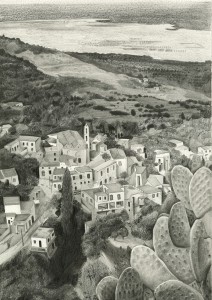
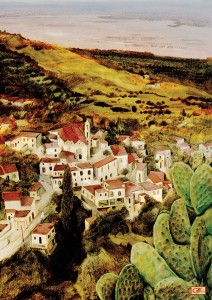
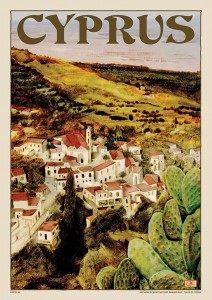
A picturesque coastal town near Kyrenia and Morfou, Lapithos had a large population of both Greek and Turkish Cypriots living together in relative harmony and peace until the political troubles of the 1950s. According to the ancient Greek geographer Strabo, Lapithos was founded by the Spartans however in Assyrian inscriptions, Lapithos is mentioned as one of the eleven Cypriot kingdoms. Undoubtedly, its strategic position and natural beauty were not lost on the ancient inhabitants of the region. This drawing captures the scenic charm that is Lapithos.
2. Stavrovouni
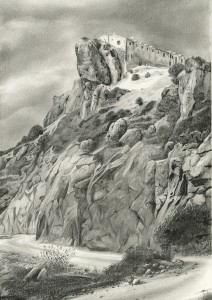
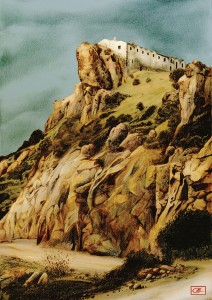
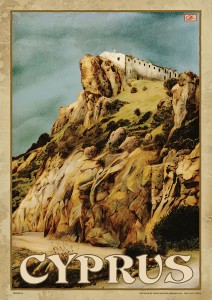
Built in the 16th century, Moni Stavrovouniou stands on top of the hill in Larnaca called Stavrovouni. The monastery is one of the few places in the world where you can see a fragment of the Holy Cross or True Cross, which was brought to the island by Saint Helena, Emperor Constantine’s mother, in 170AD. Founded in around 327-329 AD by Saint Helena this monastery is one of the oldest in the world. To local Cypriots Moni Stavrovouniou is an evocative landmark, a constant in their ever-changing world.
3. Kafenion
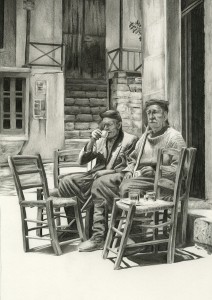
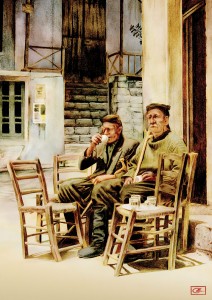
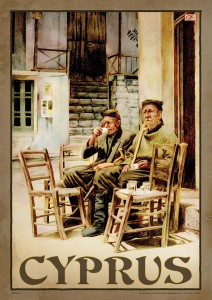
Set in the village of Panayia this drawing depicts a typical scene from the past. Here men wearing traditional costume (vrakes) sit at their local village Kafenion (coffee shop) sipping coffee and discussing the daily news. They exchange stories and reminisce about their youthful days. The village of Panayia is named after the Virgin Mary and is famed as the birthplace of the first President of the Republic of Cyprus, Archbishop Makarios III.
4. Pedra tou Romiou

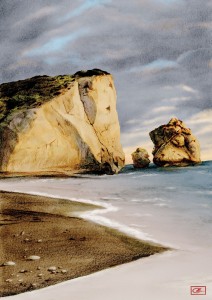
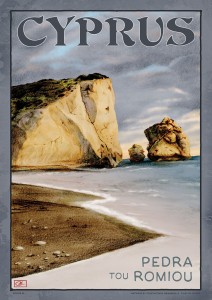
The foaming waters that lap against these famous rock fragments are said to be the birthplace of the Goddess Aphrodite. Petra tou Romiou or Aphrodite’s Rock is located on an often-windswept section of the Paphos coastline. The pebbles underfoot are uncomfortable to say the least but this unlikely sea stack, with its natural beauty and status in mythology is still one of the proudest local landmarks on the island.
5. Queen’s Window
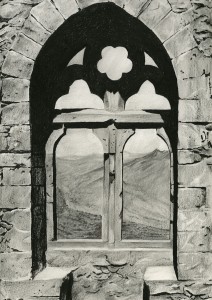

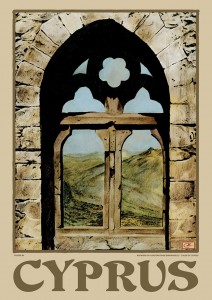
Saint Hilarion Castle was originally a church built in the 10th century and named after the monk who allegedly chose the site for his hermitage. Situated on the Kyrenia mountain range in Northern Cyprus, its location was soon fortified by the Byzantines who converted the church into a castle as its position provided command of the road from Kyrenia to Nicosia. St Hilarion Castle is the best preserved ruin of the three former strongholds in the Kyrenia mountains, the others being Kantara and Buffavento.
The Queens Window, pictured here, has a breathtaking view of the northern coast of Cyprus, overlooking the city of Kyrenia.
6. Moufflon
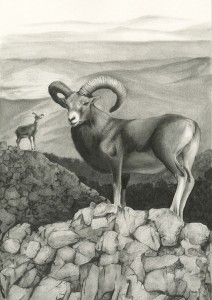
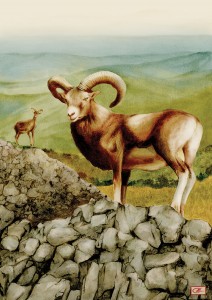

The majestic and noble moufflon or agrino (O. o. Ophion) of Cyprus is one of the two ancestors for all modern domestic sheep breeds around the world. Hunted to near extinction during the 20th century, the once plentiful herds exist now only in captivity. A natural inhabitant of the steep mountainous woodlands of the island, this silent, strong and surefooted beast exemplifies the rugged yet determined spirit of the Cypriot people.
7. Kakopetria
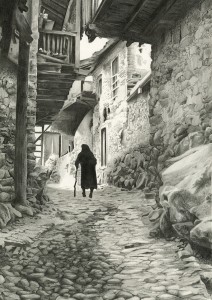
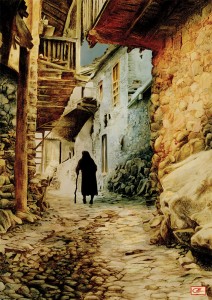

The mountainous village of Kakopetria lies on the north facing foothills of the Troodos in Central Cyprus. Famed for its uneven stony walkways and paths, Kakopetria (meaning bad rocks) lives up to its name. Standing at an altitude of 667 meters above sea level it is the highest village in the Solea Valley, but this is no problem for its inhabitants who negotiate its narrow rocky laneways with ease and confidence. Here, an old woman (stede) navigates her way back home through familiar surroundings.
8. The Water Carrier
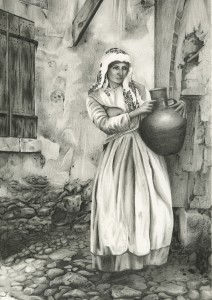
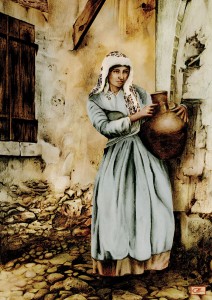
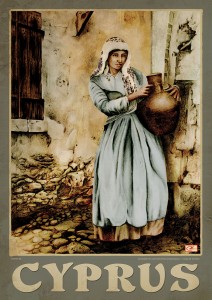
This drawing is dedicated to a simpler time in Cyprus, before modern conveniences, when young village maidens would fetch water in clay jugs from nearby natural springs or subterranean wells. While the maiden’s dress is slightly tattered revealing a life of labor, her calm face tells a different story of peace and serenity.
9. Chobani Resting
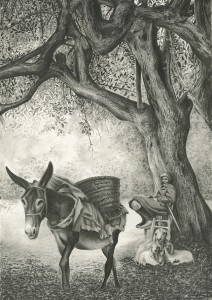
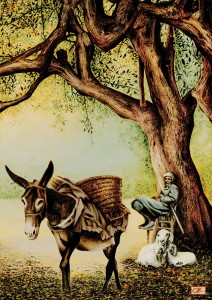
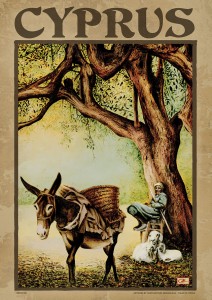
This picture depicts the humble shepherd or chobani. Once a common sight in Cyprus of old, this chobani rests peacefully beneath an ancient olive tree with a few loyal goats for company, while his trustworthy donkey keeps watch. Soon, before the sun sets, he will fill his baskets with olives and head back down the hill to return to his grazing flock. The olives will be pressed on the old stone mill or perhaps preserved in jars of salt to be served one day with warm oven-baked bread.
10. The Potters
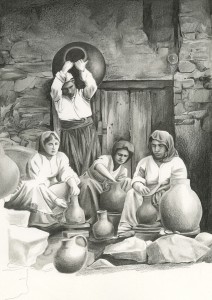
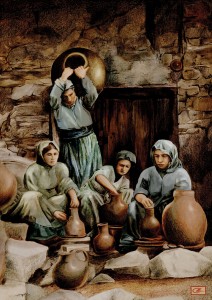
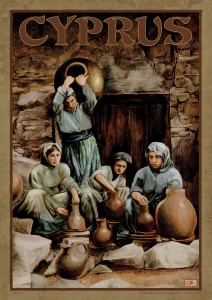
Dedicated to the skilled potters of Kornos village in Larnaca this scene depicts an important family tradition. Clay pottery manufacture has been a central component of Cypriot life for thousands of years stretching back to the Neolithic period. The village of Kornos has managed to preserve the tradition of pottery making, for which it is now best known. The shape, size and type of pottery made are according to the use they will have. Besides the giant storage jars or pitharia, there are the medium-sized water pots or kouzes and big, open pots for frying called satzia, amongst others.
11. Baking Bread
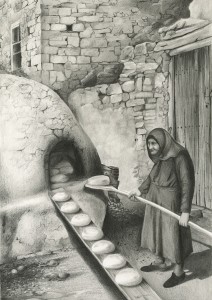

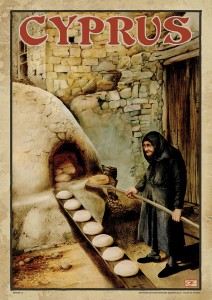
There is no greater taste than the food produced in a fourno or wood-fired oven. The use of these large beehive shaped ovens is an ancient tradition in Cyprus and many family homes had an oven built by a master craftsman. The task of firing the oven and loading it necessitated a communal effort, especially around the time of great feast days like Easter where delicious flaounes, tavas and kelftiko would be prepared to share with the whole village. But it is in the preparation and baking of daily bread that the fourno was most important.
12. Kyrenia
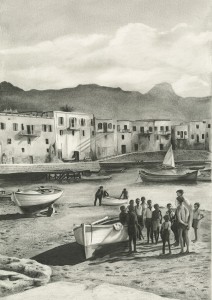
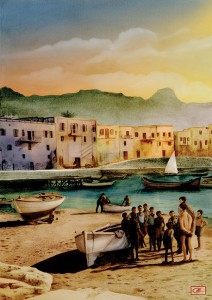
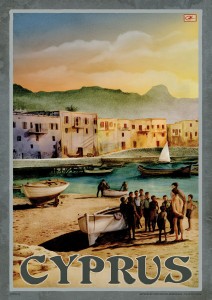
Kyrenia is by far, the most picturesque seaside harbour in all of Cyprus with a long and interesting history dating back to the end of the Trojan War. From its early days of settlement, Kyrenia’s commerce and maritime trade benefited enormously from its proximity to Asia Minor. Boats sailing from the Aegean islands traveled along the Asia Minor coast and then crossed over the short distance to the northern shores of Cyprus to reach the two city kingdoms of Lapithos and Kyrenia. In this drawing we see local fishermen at the end of a long day passing on their maritime advice to some young boys at the harbour.
Here are some of my paintings that once again depict life in Cyprus and some popular landmarks.
